This week, endoscopies for jet engines, how the aviation industry could have us cruising for an infectious bruising, the workings of radar, and whether cheap flights actually cost the Earth. Plus, in the news, why doctors could soon be culturing your cancer, the evolution of music, Messenger smashes into Mercury, and do you want to know if your DNA spells trouble for your future health?
In this episode
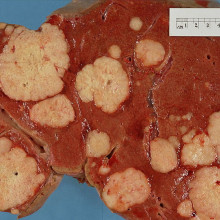
01:04 - Cancer organoids personalise therapy
Cancer organoids personalise therapy
with Aine McCarthy, Cancer Research UK
Cancer is not just one disease; there are hundreds of different types, from breast to brain and prostate to pancreatic. Making matters more complicated, it's also becoming increasingly clear that cancer is as individual as each patient and needs treating in a much more personalised way. 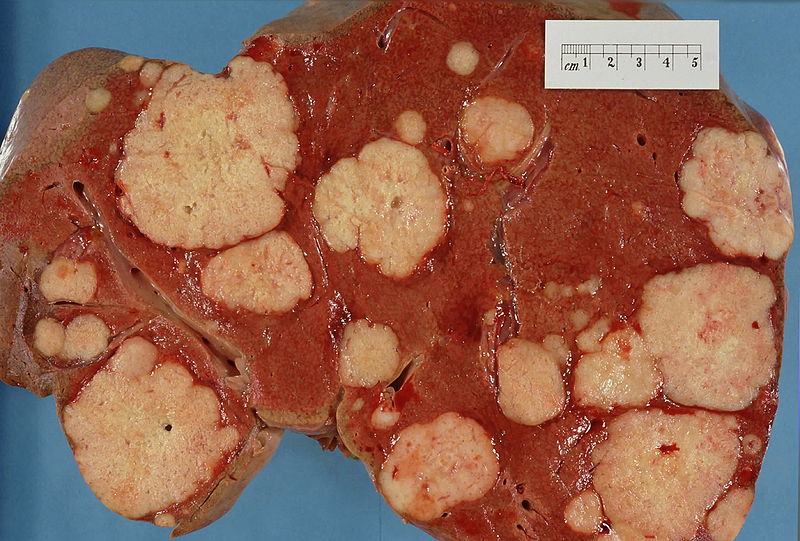 But how do doctors find out what drugs an individual's cancer is most susceptible to, and the likely prognosis? Now, scientists in the Netherlands have developed a way to grow in the lab tiny balls, known as organoids, of a patient's cancer, which can be used to test treatments before they go anywhere near the patient. Aine McCarthy, Science Information Officer at Cancer Research UK, took Kat through the study...
But how do doctors find out what drugs an individual's cancer is most susceptible to, and the likely prognosis? Now, scientists in the Netherlands have developed a way to grow in the lab tiny balls, known as organoids, of a patient's cancer, which can be used to test treatments before they go anywhere near the patient. Aine McCarthy, Science Information Officer at Cancer Research UK, took Kat through the study...
Aine - At the moment, the main techniques we use to evaluate how well tumours will respond to drugs are cell cultures and something that are called xenografts, where they transplant cells from patients into mice and watch how they grow. These two techniques are fundamental to all basic science research but they have their limitations and their flaws. With cell cultures, the problem is, we don't necessarily get to see the whole tumour or look at all the different types of cells within the tumour. So, it's a very, almost, one-dimensional look at what's going on and what's happening in the cancer cells.
Kat - What have the researchers done now that's different?
Aine - What they've done in this really interesting paper is they've taken cells and samples from patients with colorectal cancer and they've taken both cancer samples and samples of normal tissue. They've grown what are called "tumour organoids". The best way to think of these is almost as a 3D model and it's a way to look at lots of different aspects of the tumour that will give us a more, maybe, real-time look at how drugs respond and what's happening.
Kat - So, how many patients were they looking at?
Aine - They looked at 20 patients. They got normal samples from 19 of these patients and interestingly, they also had actually 22 tumour samples because in 2 of the patients that had cancer, they had 2 separate tumours. So altogether, they looked at 22 tumour samples and 19 normal samples.
Kat - So, they're growing these little 'organoids' in the lab and then what were they doing with them?
Aine - So they looked first to see how long they could grow them for and whether they could grow them, and then the next thing that they wanted to look at was, can they use this organoid model to figure out how well tumour cells will respond to drugs. They're taking the organoids - so the tumour samples and the normal samples - and they're doing what's called DNA sequencing. So, they're reading the entire DNA or genetic code of them. They're also looking at another molecule, which is the RNA expression, which allows them to look at the gene level. And then they're using this information to see which genes and which proteins are mutated or faulty and then they'll base their drug screen on this to see if specific drugs work properly to target these.
Kat - Because that would tell you what drugs might work for this patient.
Aine - Exactly, and the ultimate aim that they have is to give a more personalised, more targeted treatment and therapy to the patients. Also, what they want to do is create a biobank where they'll have these samples stored so they can be used in the future to test further drugs as they come along.
Kat - So, in terms of what they found in this paper, did it work for them?
Aine - It did work and they found that there was consensus among their findings with other literatures. So, they found similar things to other people and it does show that by using these organoids, you can identify what they call "molecular marks" or "molecular signatures" that will tell you how well a tumour will respond to certain drugs.
Kat - Now, the key thing with treating cancer is you need to do it quickly. You need to find out what's wrong with someone, what sort of cancer they have, which drugs to give them. Is this the kind of research that will be in a meaningful timescale to get those answers for doctors?
Aine - In its current state, it's not clinically used but also not able to be used in the clinic. But the main aim will be to hone the technique and to get it working in a more quick way, in a quicker manner. Basically, they acknowledge themselves that it takes a bit of awhile for the organoids to grow so ideally, they'd speed up this process and they'd make the whole thing a bit more clinically applicable. That's the best phrase I can use.
Kat - This has just been used for colorectal or bowel cancer. Do you think it could work for other types of cancer too?
Aine - In theory, I think it absolutely could. I think there's no reason to say it couldn't. But it's important to be aware that the trials and the studies will have to be done to make sure that it can accurately represent and depict what's happening in all different cancer types. But I don't see why, if tested and used properly, it couldn't give us the same information about different types of cancers.
Kat - One of the things about this organoids technique is that it means that you don't have to use mouse models, animal models at all. Could something like this completely replace the use of animal models in cancer research?
Aine - No. I don't think it could completely replace the use of animals, but it could absolutely be used in parallel. It could give us some other vital information but animal models are a necessity because they allow us to look at the whole system - the lymphatic system, the blood supply, absolutely everything. So, we could glean some more tailored, more targeted information from the organoids that we can then use in animal models, but they won't be eradicated completely.

06:18 - Messenger probe crash-lands on Mercury
Messenger probe crash-lands on Mercury
with David Rothery, Open University
NASA's Messenger probe's mission to the Solar system's innermost planet, Mercury, has now ended. At the end of April, the spacecraft, which has been orbiting Mercury for over 4 years, slammed into the surface at a speed of about 9000 miles per hour; it will have left behind a substantial  crater, but more important is the academic legacy of the mission, and space scientists are now preparing to launch a new probe to Mercury in its wake. One of the researchers on this project is the Open University's David Rothery, who explained to Chris what Messenger achieved...
crater, but more important is the academic legacy of the mission, and space scientists are now preparing to launch a new probe to Mercury in its wake. One of the researchers on this project is the Open University's David Rothery, who explained to Chris what Messenger achieved...
David - MESSENGER was launched in 2004. It had a cruise of about 5 years, then it flew past Mercury 3 times. On MESSENGER's fourth approach to Mercury, it creeped up sufficiently slowly, and was able to be captured into orbit about the planet and mapped the whole planet - imaged the surface, got spectroscopic data of the surface, got x-ray data of the surface, and probed the magnetic field in quite some depth as well.
Chris - Can you tell us a bit about the anatomy of Mercury?
David - Mercury is the smallest planet, larger than the moon but smaller than Mars, but its gravity is about the same as that of Mars because it's a much denser body. Its core, we calculate must occupy about 80 per cent of its volume. It's got a relatively thin impoverished rocky shell around the core.
Chris - Is that core made of iron in the same way that Earth's core is made of iron?
David - Yes, the core is made of iron, but there's something keeping the other parts of the core molten. We know that's the case because Mercury generates its own magnetic field like the Earth does, but Mars doesn't do it, the moon doesn't do it, Venus doesn't do it. Mercury has got a fluid outer core, acting like a dynamo to generate the magnetic field. On top of that, as I've said, we've got this relatively thin zone of rock. We used to think that was because Mercury had been hit by some enormous impact which had blasted away the outer parts of the early planet. But now we've got there with MESSENGER, we've discovered that the rock of Mercury is rich in volatile elements -those are things that would be lost in a violent collision - and we've also got volcanic vents in many parts of Mercury created by explosive volcanic eruptions. Now, you don't get an explosive volcanic eruption unless you've got something which can come out of the magma as it nears the surface and expand as a gas to drive the explosions. We're a bit flummoxed about Mercury frankly. We don't know how it formed.
Chris - What's the temperature like on the surface?
David - By day, near the equator, it exceeds 400 degrees centigrade. But at night, because the nights are quite long (the nights last 88 Earth days) at night, it goes below minus 150 centigrade. So, its a planet of very great temperature extremes.
Chris - What have scientists been able to learn in the dying days of MESSENGER?
David - It's been closer to the surface than ever before. It was getting down to 5 km before they used their remaining fuel to get it slightly higher. That gave the most detailed images we have of Mercury. We can learn from that about the small scale craters that have affected Mercury and the more we know about the cratering history, the better we can try to work out the age of Mercury's surface.
Chris - Has it enabled scientists to nail any really big questions?
David - It's probably given us more big questions! We used to think it's a cinder, that close to the sun the rock's been burned away. It's been hit by something which has flung off most of the rock, but it should've lost its volatiles. Now we realise that hasn't happened. We're thinking Mercury maybe formed elsewhere, somewhere further from the sun, richer in volatiles. And maybe to explain the large core, a story that came out last year is that Mercury wasn't the target of a giant impact, it was the impact! Mercury careened into the Earth or Venus, stripped off a lot of it's outer layers in the process. So, Mercury is now being described as a hit and run impactor.
Chris - So, any plans on the part of the European Space Agency or others to go back and take a look at some of the big questions that MESSENGER has now enabled us to ask?
David - Well, very much so. We have a spacecraft almost completed called BepiColombo. It will be launching in 2017. We'll assume our science orbit about Mercury April/May 2024 - so that's 9 years from now. The questions that we have to seek to answer have been strongly modified by what MESSENGER has taught us. One thing we want to do is find the crater that MESSENGER made when it crashed just last week.
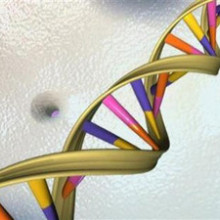
11:28 - Do you want to know what's in your DNA?
Do you want to know what's in your DNA?
with Anna Middleton, Sanger Institute
Ninety-eight per cent of us would want to be told if we're found to be carrying a gene linked to a serious underlying health condition. That's according to a study of 7000 people by  Anna Middleton from the Sanger Institute. The results are important because, by 2017, 100,000 people in the UK will have had their genomes sequenced. And as researchers probe that genetic information, genes associated with other diseases are going to come to light, as Anna explained to Chris Smith...
Anna Middleton from the Sanger Institute. The results are important because, by 2017, 100,000 people in the UK will have had their genomes sequenced. And as researchers probe that genetic information, genes associated with other diseases are going to come to light, as Anna explained to Chris Smith...
Anna - Yes, absolutely and people around the world are taking part in genetic and genomic research. Labs in universities across the world have thousands of samples belonging to research participants. It's only really relatively recently that we've been starting to think, "Well, should we be actually feeding back data to those people that gave the samples to start with?"
Chris - Is that really what motivated you to do the study? We're generating a lot of data and there isn't really a policy or any kind of precedent in place as to how to handle it?
Anna - Yes. I guess traditionally, there's been quite a disconnect between the research participant and the researcher. Maybe the research participant has given their sample, handed it over to research, and the researchers just get on with it. So recently, we started to think, "Well actually, there's an awful lot of health related data in there. Should we be more connected to the research participant and think about sharing some of that?"
Chris - I suppose, one of the big questions with anything genetic is that whilst I personally may want to know genetically what my risk profile is, I have two parents, I have brothers and sisters potentially. If they are who I think they are - in terms of their relationship to me - once I know something about me, I actually know something about them too and there's an ethical consideration there.
Anna - Yeah, absolutely. and so, any data that would be shared should be done in a clinical environment with suitably prepared and trained health professionals who can deliver that information and think about the impact on the individual but also their family, and their children, and their parents, and their siblings.
Chris - Do people realise that though when they go for a genetic test or when they answer things like your questionnaire? You surveyed 7,000 people - "Would you like to know if you have a risk of some kind of underlying disorder?" Were they conscious of that consideration, because I must admit, until I began to think about your work and the questions you're asking, I hadn't really thought about it from that perspective.
Anna - Yeah. We were very aware of needing to explain this really carefully. And so, what I did was I worked with a filmmaker to create 10 short films that sit within our survey. The films described the ethical issues raised by genomics and they explain this data is relevant to lots of different people. Do you still want to know? What we found is that people just actually felt quite excited by genomic data. They felt that it could have some value for them in protecting their health. It could be useful to them and they want to be part of the research process.
Chris - We did a little sort of mini survey on a very small audience - it's not the 7,000 you looked at - at a live event we ran in Cambridge. Actually, with David Spiegelhalter, who is professor of the public understanding of risk at Cambridge University. He asked the audience, "If you could be told how long you're going to live for, would you like to know?" Now, all the kids in the audience said, "Absolutely. I want to know when I'm going to die. Therefore, how long I've got." All the adults in the audience said, "No." And he said, "Isn't it interesting that when you're little and things seem very far away, you want to know the absolute black and white scenario, but as you get older, you're much more comfortable embracing a bit of risk?"
Anna - Actually, we found something different. So, we did actually look at lots of different age profiles and we found that the young and the old were just as interested in data. But where we did find a socio-demographic difference was between men and women. We found that men, irrespective of where they live in the world, were more likely to want access to more data and it was actually the women who were more cautious and said, "Actually, I'd like to know some things, but not others." Like uncertain data, "No, I'm not interested in that."
Chris - Would there be off the back of your study some kind of framework put in place then so that when we do research and we take a sample from somebody that we do have some kind of ethical obligation, or some kind of relationship, going forward with them where we can pass on information?
Anna - Yeah. I mean, the findings of our research hopefully will be adopted into policy. What we've actually found is that although people say they want data, they also put a value on that data. So, they don't actually expect it to be delivered to them at all costs. So, we did say, that in the research setting, "If the research question and answering that was devalued or compromised in some way by having to provide data to you, would you still want to know?" And people said, "No. Focus on answering the research question. We'll forego our data. So, focus on doing good quality research first."
Chris - What about a situation which actually, I was involved in? I did a study a long time ago when I was in Australia and we were looking at say, breastmilk for the presence or absence of a virus that might pass in breastmilk, but it could be linked to breast cancer in later life. Now, I managed to obtain breastmilk samples that have been frozen in a tissue bank for a nutritional study for many, many years. There was a big ethical question when I got access to it, over whether or not I should be telling the people who I was using the milk from, what I was doing with it because if I did find traces of this virus in it, that might have an implication for them. I, on the other hand argued that actually, if it were my breastmilk, I probably wouldn't want to know because there's nothing I could do, having discovered this association potentially. At the moment, there's no kind of treatment for it. So therefore, is it better to remain ignorant of the fact?
Anna - Well, I think really what you always should be doing is only sharing what the research participant has consented to be given, so you shouldn't be altering consent forms and breaching those protocols. But what we're looking at is moving forward for new research studies that are constructed now to actually think about the research participant at the end of the process and ask them right at the beginning, "How connected do you want to be to the research that we're doing? Would you like to have individualised results? Would you not? Would you like to know certain things? Would you not?" But just to be more connected to it.
Chris - 98 per cent is a very high number, isn't it? Were you surprised?
Anna - Very surprised, yeah. I was expecting far more people to say, "No, not interested in this." It just shows that people had a perceived value of the importance of genomic data and whether that is real or not, is something else. But they thought there was something useful they could do with it.

16:35 - How has music evolved in 50 years?
How has music evolved in 50 years?
with Matthias Mauch, Queen Mary University of London
Pretty much everyone enjoys listening to music, but are you the kind of person who believes pop music went completely downhill after The Beatles, or do you love bopping along to a bit of  Rihanna or rap? One person who's taking a more scientific approach to discovering how musical tastes have changed over the years is Matthias Mauch, from Queen Mary University of London, who has been analysing thousands of songs from the US Billboard hot 100 chart to track the evolution of popular music. Kat Arney went to meet him...
Rihanna or rap? One person who's taking a more scientific approach to discovering how musical tastes have changed over the years is Matthias Mauch, from Queen Mary University of London, who has been analysing thousands of songs from the US Billboard hot 100 chart to track the evolution of popular music. Kat Arney went to meet him...
Matthias - We were interested in analysing the evolution of popular music, so we needed a dataset. I was working in Last FM so we had access to a lot of recordings and we also had access to the Billboard Charts. So, we put the two things together and we had this beautiful dataset of 50 years of US Charts, Singles Charts, Hot 100. 17,000 songs that we simply had on our hard drives. Now, what do you do with this? Luckily enough, I specialise, as some other people around the world do, in music informatics and this is exactly our business. So, we are scientists who develop new algorithms to extract information from music and that's exactly what we did.
Kat - So, you weren't listening to 17,000 songs. You basically made a computer listen to it and tell you, what does this sound like, what's in here?
Matthias - That's exactly right. Trust me, we listen to a lot of them, but not nearly 17,000. This sort of study is only possible if you use computers.
Kat - What sort of things were you looking for? What were you analysing the songs for?
Matthias - So, we were analysing the songs mainly for harmony and timbre. Harmony, we analysed chord changes. So, I was really interested in trying to understand how the song writing in terms of chord changes are changed. In terms of timbre, this is merely like sound colour. So, we could identify dark or aggressive or percussive sounds.
Kat - What sort of patterns do you see in the data?
Matthias - We do have some beautiful waves. There are some other patterns we've got like a camel-like, two humped, pattern that is aggressive guitaring music. And that was once prevalent in the early '70s, or around the early '70s, and once around the late '80s. so, that was kind of the early rock, and then it comes again as stadium rock. Yeah, we've got beautiful patterns. Well I've talked to you now about these timbre patterns, so let's have a look at some harmonic patterns. So, to me, the fascinating one is the decline of the dominant 7th chord. Now, for your listeners who are not musically inclined, dominant 7th chords are very important in blues and jazz. In blues particularly, they give the dissonance in the dominant 7th chord, it gives it a sort of dirty colour. And these chords seem to be vanishing in the charts. So, even by 1975 or something, they'd almost completely gone and never came back.
Kat - Were there any chords that replaced them?
Matthias - Yes, there certainly were. So then we can see around 1970, suddenly, there was this new kind of chord. It was not exactly new. They have been used before, but not very much. And then suddenly, as funk came into the charts and slowly turned into disco, these minus 7th chords were suddenly prevalent. Indeed, if you listen to Night Fever by the Bee Gees, you'll hear lots of these dangly minus 7th chords. So, they came in and stayed pretty much for a long time. Later, around in the '90s, there came this new kind of harmonic style that came in to the charts and we looked at it and we were wondering what it was. It was no harmonic. So, that was quite exciting to us and we saw that suddenly, rap and hip-hop, these songs dared essentially to do away with harmony altogether pretty much and focus on something completely different.
Kat - Did you see music evolving or were there just step changes where it became very different?
Matthias - This is one of the fascinating things, that to me are fascinating, but don't really make the news very much because it seems so normal. But actually, what you say is kind of the reason why we call it evolution because what we see is that charts don't change just like that from one year to the next. They don't change. They might change rapidly, but there's always some lag to it. What happens is that people usually take something that exists, recombine it and change it, and then make new music. So, it's very rare that music is created from a vacuum, if it's possible at all.
Kat - People basically like listening to things that are kind of familiar. They might know something, but then it's got something new in it that's coming from somewhere else.
Matthias - Obviously, composers and songwriters don't write the same song again - except sometimes they've tried. But if they were to write exactly the same song then obviously, no one would buy it once more, right?
Kat - Some people would say, well, we don't make music like the old days and it's all rubbish now. Was there any algorithm that could tell you about the quality of the songs whether they were actually any good?
Matthias - Yeah, we wish we could. So, we don't actually have that. So, we have to admit that our algorithms - some musicologists can analyse few songs really well and we can analyse very many songs not quite so well - our measures are more crude. But what we can say is more generally perhaps about the whole charts. So, we can't really say how good one song is. But we can say how diverse, how exciting the chart as a whole is. So, would you see many different sounds in the charts? So, if you randomly turned on the radio in a chart show, would you get nice, excitingly different ones? That turned out to be quite an interesting exercise because we realised that in the mid'80s, that was much less the case than in other eras.
Kat - So, the charts that we have now and the charts before the '80s were a lot more different types of music in there.
Matthias - That seems so. Of course, our study went on only to 2010, but yes. So, it seems as if there was quite a lot of diversity in the charts then it dipped in the '80s and then it came back. Partly because rap added these fresh notes and you had a new kind of style in the charts that made the charts as a whole more diverse and perhaps interesting.
Kat - Do you have a favourite decade or did you even find a favourite year where you're like, "Yeah, I love all those songs"?
Matthias - Personally, I quite like the '70s actually. I'm a bit of a '70s person I think.
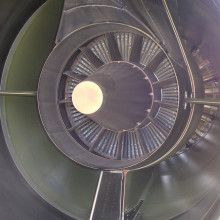
23:28 - Keeping jet engines healthy
Keeping jet engines healthy
with Matt Burns, Operational Service Desk, Nick Ward, Equipment Health Monitoring, Rolls-Royce
Aircraft are complex machines that fly tens of millions of miles over their lifetimes. But what does it take to keep an airliner running smoothly, and how can you tell when or if it's in need of a service? The key components of any aircraft are its engines. And the world leader in this sector is UK-based Rolls-Royce. They make about half of the world's jet engines. But rather than selling their engines, they retain ownership of them and effectively rent them to aeroplane owners. This means that Rolls-Royce take responsibility for monitoring and maintaining them. Philip Garsed went to Rolls-Royce HQ, in Derby, to speak to Nick Ward, and before him Matt Burns who heads the company's Operational Service Desk...
Matt - We're here in our customer training centre. We're stood in between a pair of Trent XWB engines. These are engines that power the airbus A350 aircraft that successfully entered service in October of last year with Qatar Airways.
Philip - This thing is absolutely massive. At the front of it, there is a fan that is much bigger than I am tall. It's made of many enormous fan blades. It will take me 10 paces to walk down its length and it's covered with pipes and wires. It's just an incredible piece of engineering to look at and it completely dwarfs me.
Matt - They're pretty impressive beasts when you get up-close and of course, we're seeing it here stripped of its outer cowling. So, it isn't the glossy, painted exterior that the traveling public may be used to seeing, but it's nonetheless impressive.
Philip - Can you explain to me how an engine like this actually works?
Matt - So the engine, as you can see at the front there, is really dominated by this large fan. Eighty per cent of the thrust of the engine is generated by that fan. You might consider that the engine is almost pulling itself through the sky, sucking tremendous volumes of air through itself and pushing them out in the back, roughly, the equivalent of a squash-court-full of air is being pulled through that engine every second.
Philip - It's not just its huge fan blade on the front though. I can see that it gets a bit smaller in the middle and then there's lots of other smaller blades inside. What are they doing?
Matt - The rest of the engine is to generate the power that's needed to propel that fan at the front. The air is being pulled into the front of the engine and packed down tighter and tighter and tighter, and then we're going to add some fuel and light a match! So, that really tightly compressed, energy-rich air is filled with even more energy from the fuel and from the ignition, and that energy is then released as that air rushes out through the turbines of the back of the engine.
Philip - How hot does it get in the middle of this thing?
Matt - The turbine blades in the high pressure system in this engine, they're sitting and working in an environment that's actually beyond the melting point of their raw material. Whilst at the same time, being subject to forces that are about equivalent to hanging a double-decker bus off the end of each individual one of them!
Philip - How do you keep a machine like this working optimally for its entire lifetime?
Matt - It's just a given that this will deliver that tremendous amount of thrust reliably every time that's required of it. We're talking about each engine accumulating 40 million kilometres of distance-travelled before it's removed from the aircraft for overhaul. Our ability to do that is really supported by the data and the information which we can extract from these engines whilst they're operating.
Philip - And when Matt talked about extracting data whilst the engines are operating, he quite literally means whilst they're flying you on holiday. On the side of the engine is a small grey box that collects information from sensors all over it and that box beams this information back to the nerve-centre at Rolls-Royce in Derby...
Nick - Hi. I'm Nick Ward. I'm the product manager for equipment health monitoring - that's to do monitoring of the engines. We have 12,000 engines actually coming in to our global data centre. We're looking at the temperatures, the operation, the speeds of the shafts, the pressure drops between different stages. All of that data is then coming through to us as individual parameters measuring each flight. That then goes into a system where we're looking at what does it all mean and other things of interest we want to see in the data. And then we alert people like Matt in the operation centre to take some action.
Philip - Why do you need to collect so much data?
Nick - If you want to look at this from the airline's point of view, they want to concentrate on putting passengers on aircraft, putting pilots on aircraft and flying. That's how they make money. They would like to give the responsibility of looking after the complicated engineering elements to somebody else.
Philip - You're letting the airlines get on with the job that they do best, which is shifting people around, and you're getting on with the job that you do best, which is making world-leading engines?
Nick - Exactly.
Philip - If you notice some data points which aren't quite what you'd hope for in mid-flight, what do you do then?
Nick - We look to see whether there were any spikes in any of those parameters, anything which might be moving upwards or moving downwards unexpectedly. We call those things features inside the data. We collect a number of those features together and they might represent a symptom. A number of those symptoms will then form a diagnosis, very much the same as you go to a GP. You're taking the temperature of the engine, you're looking to see whether the temperature is going up. When I'm hot and sweaty then maybe my diagnosis is that this is the 'flu. It's very similar on an engine. The diagnosis is then passed on to the operation centre here, and Matt will take that information, which then leads us to make a decision. Is it something that we want to take action on? Should we schedule an inspection? Maybe send a camera down inside and see whether we can get a bit more information.
Philip - Send a camera down inside the engine? That sounded intriguing, so I spoke to Matt back at the engine to find out more...
Matt - A simple way to think about this is actually to relate it to some of the medical practices which are pretty common place now. So, if a doctor decides that he wants to take a look inside you, he doesn't come straight in with a knife and open you up. A more common approach these days would be to introduce a camera, an endoscope. So, in our industry, we refer to these as borescopes. If you look right underneath the engine here, you can see some of these ports here. So, where we've potentially seen something in the data that might warrant us to take a look in the engine and check how everything is going; we'd be able to remove one of these ports and introduce a camera deep into the insides of the engine and actually see what's going on. If we were to find some damage from something that had been sucked in through that tremendously powerful fan at the front, we've got the ability to take positive action to remove that damage, possibly with the use of laser techniques or more traditional mechanical techniques, so that we can get the engine back to its full health and deliver reliable performance for the life of the engine.
Chris - Philip Garsed speaking with Matt Burns and earlier, Nick Ward. They're both from Rolls-Royce. Sounds like you had a fascinating time and an endoscopy for an engine. I couldn't resist the medical analogy.
Philip - Yes, it's absolutely amazing that some of technology that people use to look inside people in medical settings are actually also used in a very similar way in engineering. The thing that really struck me about the whole place was just the sheer scale of it, how it was necessary to bring in data from across the world. And I walked into this control room where there was a screen with the map of the world and data about engines and planes, all in flight. Teams and teams of people, all keeping an eye on the data, just to make sure that everything was ticking along nicely.
Chris - Did they actually run the engine with the camera in there, or is it a question of if you thread the camera in then you just turn the engine over to inspect the components?
Philip - The camera is there if they decide they want to have a bit of a closer look because these things are so complicated that actually taking off the wing and taking it to pieces is a really big ask. And so, these are just used when they've seen something in their data and they just want to have a quick look and check that everything is okay, and maybe decide if anything more substantial is required.

31:24 - Are aeroplanes spreading diseases?
Are aeroplanes spreading diseases?
with Steven Riley, Imperial College London
By air, you can travel around the globe in much less than 80 days, which means any infectious nasties you caught on holiday could spread easily and rapidly around the world. What is the risk?  Infectious disease expert Steven Riley, from Imperial College London, spoke to Kat Arney about whether planes really are spreading disease...
Infectious disease expert Steven Riley, from Imperial College London, spoke to Kat Arney about whether planes really are spreading disease...
Steven - I think from some of the recent high profile outbreaks - if we go back to SARS or the 2009 pandemic and even the recent Ebola epidemic - I think we can be pretty confident that those long range, the initial long range, infection events are coming on aeroplanes.
Kat - How do we know that they actually are? How do you pin them down instead of just going, "They must be. It's popped up here, it's popped up there. It must have come on a plane?"
Steven - So, there's a few different ways that it's been looked at. Particularly, with some of these infections that when almost everybody that gets infected turns out to have symptoms. We have a lot of case-based data. We can trace the original roots of the SARS epidemics through particular hotels in Hong Kong and then flights that went out to Canada. So, even that traditional epidemiology can trace a lot of these events back. And then beyond that, when the number start to get a little bit bigger, we can do some fairly straightforward calculations and from the airline data, we know where people travel. So, we can make predictions about where the cases are likely to pop up and when they're likely to pop up. And generally, they work pretty well.
Kat - Are there any diseases that are more or less likely to spread? I mean, we heard so much about the Ebola outbreak. But you've mentioned SARS as being more of a problem. Are there particular diseases that really like to get on a plane and go?
Steven - There's quite a bit of evidence out there about influenza and that it does spread around the world on planes, that it does also manage to infect people whilst they're actually on the plane. There is some good work on some of the bacterial pathogens as well. But it's difficult to know because it's so subject to what scientists choose to study.
Kat - And the key thing is really - I go on planes occasionally, lots and lots of our listeners I'm sure do travel by air - how much of a risk is it that diseases or even major outbreaks will be spread? What can we do to prevent/protect ourselves?
Steven - There's a lot of good evidence from those early stages. So, that is when diseases will spread, but that's not going to affect most of us the vast majority of the time. Public health authorities recommend the standard procedures for protecting yourself from respiratory infections. So, regular effective hand washing and things like that. So, the really difficult question is, how much more risky is it to be on a plane on any given day than to do some other activity in your life? And that is a very difficult question to answer.
Kat - So, is it more dangerous to be on a plane than say, on the London underground tube? I mean, London is a huge melting pot for the world.
Steven - That's right and these are the types of questions that we are trying to get into now. It boils down to some really interesting stuff about routes of transmission. It's very disease specific but again, for influenza, how much of it is really aerosol? If someone sneezes in a tube train, do you really have a risk of getting 'flu from that person or is it that they don't use a handkerchief properly and it goes via the door to your office. Those are the questions. There's a lot of work going in to trying to answer that so that we can think about quantifying those specific risks.
Kat - We've only had these kind of means of travel for a few hundred years and before that there were ships and people traveling around the world. But really, in terms of human history, we've not been super mobile and suddenly, we're spreading these viruses and pathogens all over the place. Should we be concerned about this?
Steven - I think there's lots of evidence all the way back through human history that as we live in more dense populations and as we become more connected that we do enable the spread of disease. There's great evidence from archaeological findings and careful analysis how smallpox originated in kind of northern Africa and then into Europe and didn't actually reach the Americas until the Europeans started going over there regularly. So, these things have been happening throughout history and we don't know that maybe we've been through all the bad ones or most of the bad ones. So, it's not clear that it's definitely a negative, but there's lots of examples of how the increasing density with which we live, which are designed with a better connectivity, does allow new things then.
Kat - One of the things that my friends and I sometimes joke about is, if we go on a plane, we always feel a bit grotty afterwards. We call it plane 'flu. Is there actually anything intrinsically unhealthy about being locked up in an airplane cabin? Is this true that people do tend to get sick after flying?
Steven - I'm not sure how good the evidence is that you get a much higher risk. I think if someone around you has just become infectious with the respiratory pathogen and they're coughing a lot then there's good evidence that you don't want to be in the two seats very close to them - sharing a row or sharing two rows is not so great either. Further away than that is a little bit better. So, there's some noise about that, but I mean, it's not entirely my area, but I'm sure just being in a lower pressure and getting a bit dehydrated and feeling a bit dried out probably makes us all feel a bit grotty after a very long flight.
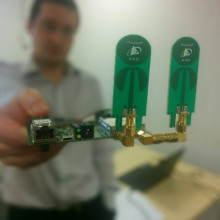
37:46 - How does a radar work?
How does a radar work?
with Ramsey Faragher, Cambridge University Computing Laboratory
You're up in a plane, cruising at altitude. All systems are normal. But above the clouds, everything looks pretty much the same. How do we know where we are, where we're going and what's ahead of us? More importantly, how do we avoid collisions? The answer is radar, which uses 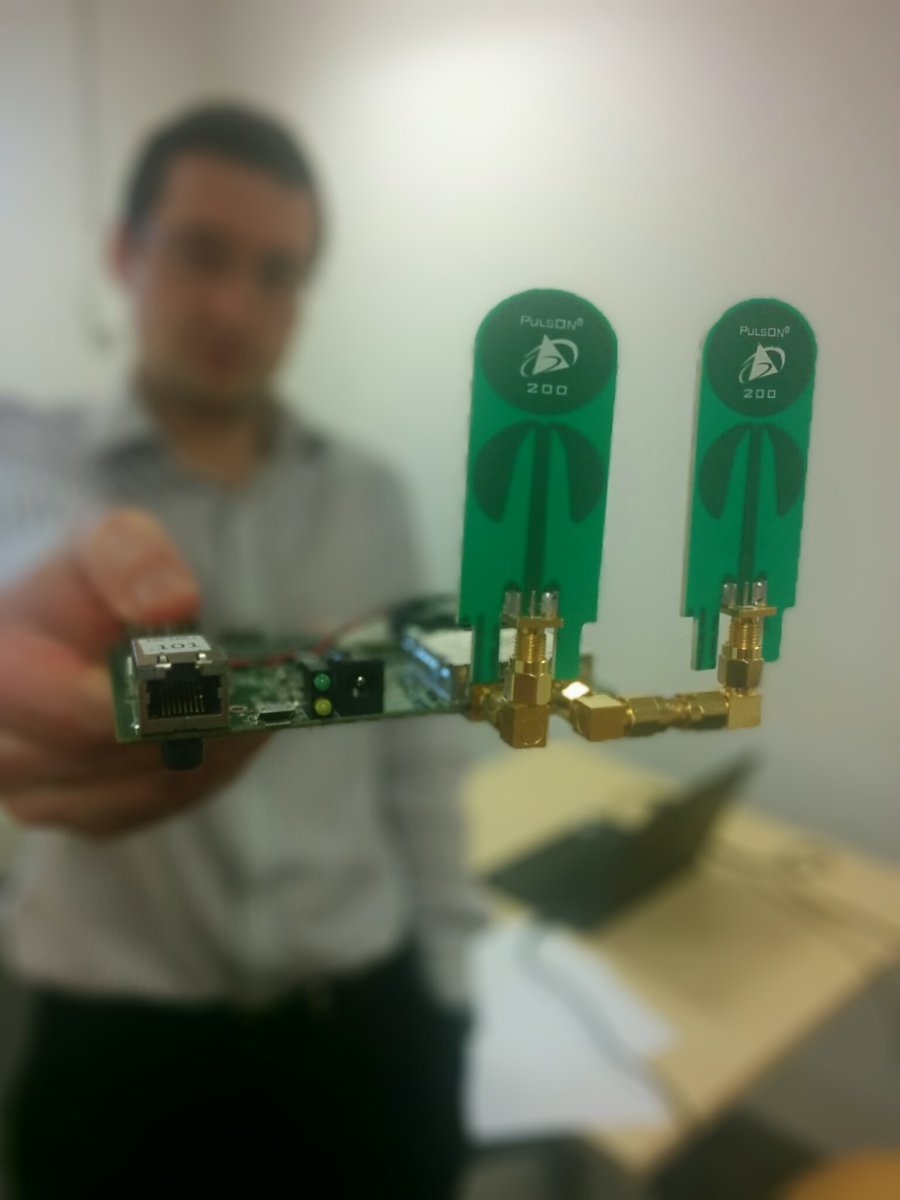 radio waves to detect the presence, direction, distance, and speed of distant objects. Speaking with Chris Smith, Ramsey Faragher of the University of Cambridge Computer Laboratory has his very own radar to demonstrate how this craft-y system works...
radio waves to detect the presence, direction, distance, and speed of distant objects. Speaking with Chris Smith, Ramsey Faragher of the University of Cambridge Computer Laboratory has his very own radar to demonstrate how this craft-y system works...
Ramsey - A radar system creates a very carefully crafted pulse of electromagnetic radiation, that's very powerful but very short in time, and it pings this pulse out and then sits there quietly and waits to hear for the ping to bounce off things and come back. The only reason this works is because the speed of light, while very, very fast, is thankfully not infinite. So, you can time how long it takes for an echo to come back to you and then easily work out how far away something is. But radars have a big challenge. They spray this radiation out into the world and it will bounce off trees, buildings, wind turbines, any old object, hopefully, the odd aircraft if that's what it's supposed to be detecting. But a radar has to deal with all of these reflections coming back and pick what it is interested in. And so, there's a few things that radars can do in order to make sure it's just tracking the aircraft. We can demonstrate one of these here in the studio - one of these methods of tracking just what you're interested in. So, I've got a little radar with me that's about the size of a mobile phone. It has two little antennas that are about the size of your thumb. One of those antennas does the transmitting and the other one does the receiving. It's going to spray radiation out into the studio and it'll bounce around all over the place. But we've done something very clever so that it only tracks Phil, your producer, and we'll demonstrate that in a moment.
Chris - I'm slightly concerned that it's tracking him at the level of his crotch. Is there any damage that could be done to a person from exposure to radar energy?
Ramsey - Not in these power levels, no, that's okay.
Chris - He may experience a warming sensation. Okay, so you're going to ask him to start in one position and then move. What are we going to be hearing on the radio?
Ramsey - So, I've rigged up this laptop so that when the radar pulse is sent, the laptop makes this beeping sound...
[beep]
Chris - So, that's the pulse being sent out in all directions around the room.
Ramsey - Yup. So, as soon as we hear that, we can imagine that we need to listen for a pulse to return. If we time how long it takes, we'll work out how far away things are. And so that it's easy to hear when the return pulses come back, it sounds slightly different. So, this is the sound that the laptop will make when it receives the pulse back again...
[boop]
So, it's slightly lower in pitch. So, if I start the system going, you'll hear the beep and then the boop - the high pitch and the low pitch, and you'll hear them quite close together because Phil is starting very close to the radar.
Chris - He's about a foot away from your radar, isn't he?
Ramsey - Yeah.
Chris - So, start it off then. And if Philip could start walking backwards across the room away from the radar source...
Ramsey - So now, there's a clear gap between the two and if Phil hurries back over, the gap would be very small again.
Chris - So, it's using the time it takes the reflections to come back and it knows how fast light travels and therefore, it can work out how long the light has been traveling to go to Philip and back to the receiver and therefore, it works out what the distance is. One problem I can spot with this though is it doesn't know whether he is that distance away in a horizontal across the room or almost on top of the radar device but vertically above it. So, it doesn't actually have any idea of what sort of angle he's at relative to it, does it?
Ramsey - That's right. So, the radar is very, very good at measuring velocity. It's okay at measuring range but it's not very good at measuring angles. So yes, there is no measurements really that I was making there that could tell me the angle around to the sides or up and down that Philip was to the radar.
Chris - Is that why air traffic has corridors where they know they put aeroplanes in certain altitude blocks and then they know a pulse coming back from there must correspond to a ping back from that angle, that corridor?
Ramsey - Yes. So, a radar that's used for a traffic control typically rotates in the horizontal plane so it kind of sprays out the radiation along the compass bearings, if you like. And that's how it tries to determine your heading, but the altitude you're at, that's very hard for the radars to distinguish. What they do to get around that problem is that a transponder in the aircraft which is a radio receiver that emits information as soon as it hears that it's hit by the radio, the radar pulse, those transponders, they broadcast the identity of the aircraft and they broadcast its altitude, and sometimes some other information as well.
Chris - Do they fire off when the see the radar pulse come in then? So, it's listening for the pulse to arrive and it says, "Aha! Someone's pinging my aeroplane" and it then sends back a signal going, "Here, I am!" It announces itself.
Ramsey - Yeah, that's right. So, as soon as the radar pulse comes back, it comes back with this extra radio information, that's transmitted on a different frequency from the aircraft, that contains identity, height and often some other information too.
Chris - Are there any ways that we can track aircraft in addition to using radar, because we've had a number of high profile cases recently of aircraft disappearing and then being either impossible to locate or there being a significant delay before they were found. And then everyone goes hunting for black boxes which we'll find out about later. Is there any better way of keeping tabs on where planes are in the sky?
Ramsey - So, there is a big push at the moment to replace what we call primary radar systems which is literally spraying electromagnetic radiation out from the airport. Replacing those primary systems with secondary systems and one of those secondary systems is the use of GPS on board the aircraft. So, the aircraft simply record their GPS information and then broadcast it over a radio channel. This technology is called ADSB. It's being rolled out on large aircraft and even small aircraft like gliders will carry ADSB transmitted now as well. So, that has drastically reduced the cost associated with tracking aircraft. It means that if a system fails, it fails just on that aircraft and just that aircraft needs for a system to be replaced where of course, if the primary radar went down at Heathrow then it would drastically affect hundreds of aircraft. So, it's a great way of reducing the costs and spreading the risk of a problem.
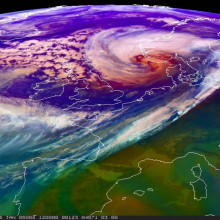
44:37 - The environmental cost of flying
The environmental cost of flying
with Douglas Crawford-Brown, Cambridge Centre for Climate Change Mitigation Research
Do cheap flights cost the Earth? To examine the price the environment pays for the aviation industry, Kat Arney spoke with Professor Douglas Crawford-Brown, Director of the Cambridge Centre for Climate Change Mitigation Research, to find out how much flying contributes to climate change...
Douglas - At the moment, it's only a couple of percent, 2 to 3 percent, of the carbon dioxide that's emitted around the world on average. But if you look at somebody like myself, and we'll come to that in just a bit, it's probably 50 percent, 60 percent of my carbon footprint. But also, as we start to reduce carbon dioxide from other things like our electricity system and so forth, air transport will start to become an even larger percentage than it is today.
Kat - Air transport does seem to have a reputation as being a baddie of the climate world. How does it stack up against other forms of transport?
Douglas - It's not actually so bad. So, we'll take my case for example. The problem with it is not that I ride on an aeroplane. In fact, in the places that I go to, I would emit more carbon if I were to get into a car or to get onto a bus and go to those places. The problem is that I go tens of thousands of kilometres flying around the world to teach people to reduce their carbon footprint. Peter and I can discuss that at some point.
Kat - There's got to be an irony in that. Is it just that this is what we have to put up with to live in a global world? Is there any way that we could actually improve planes to reduce this kind of impact on the planet?
Douglas - We could, but first of all, I would say that the greenest travel is the travel that you don't make at all because you didn't need to in the first place. And so, things like telecommuting are starting to replace the need to be getting onto aeroplanes or into cars. But also, what really matters is how many people you're packing into an aeroplane or a car or a bus, or what have you. Pack enough people onto an aeroplane, put them into economy, don't let them go into first class, and they will be emitting less than they would have if they'd gotten into a car or onto a bus. Not less than if they'd gotten onto a train though.
Kat - That may make some people in first class unhappy, but I'm sure the rest of us in cattle class will feel a bit more virtuous. I fly to Canada to visit my sister sometimes and I think, maybe I should offset my carbon. What should we do? Do these kind of schemes make any difference?
Douglas - Well, the only thing that really makes a difference is not getting onto the plane to begin with, but offsetting, I'm really torn on offsetting. There's no doubt that one can plant trees and this will pull some of the carbon dioxide out. The problem that we have is that the CO2 that you're emitting from your aeroplane travel is being emitted immediately, but the CO2 that's going to come out as a result of the tree is going to come out over the next 50 years or so. What matters is not just the amount of CO2 that we take out of the atmosphere but how quickly we do it. So, I'm not a big fan of offsetting.
Kat - Are there any realistic strategies that could be used in the immediate or the very near term future to reduce the carbon impacts of flying?
Douglas - Well, engineers look a lot at the efficiency of the engines, the drag on the surface of the aeroplane and so forth. But that we've got to the point now where we've pretty much done all of those improvements and therefore, what really is the next step is moving towards fuels that don't emit as much CO2. So, something like biofuels moving into the aviation industry. We're not there yet for biofuels. We can't produce enough of them at the moment, but that certainly is a solution.
Kat - Do you think we will see carbon neutral aviation, or do you think that people will seriously stop flying or reduce their flights anytime soon?
Douglas - I don't think certainly in my lifetime, which doesn't say much given my age. In my lifetime, I don't think we'll ever see carbon neutral air travel. But certainly, in my son's lifetime, there's a possibility that at least we'll have air travel that's down by a factor of two or three lower in emissions than is currently the case today. Again, I don't think we'll ever hit the zero carbon.
Kat - In terms of things like policy, we're talking about maybe expanding one of the two big airports in the south of England. Should we be looking to have more flights but they're more efficient or should we be looking just to curb our love for the skies?
Douglas - Yes, well I mean, there are reasons that people fly around. I have reasons that I fly around. I like it quite a bit, but there's no doubt that we're going to be reaching a limit to the number of people who can be traveling anymore in the future by air and therefore, I think we'll be cutting back on at least the rate of expansion of airports. But it's an important economic component of the UK for example. So, that's going to be a tough battle to fight with the treasury.

49:58 - How do black boxes work?
How do black boxes work?
How do black boxes work? When a plane crashes, there's always a huge search for the elusive 'black box' to solve the mystery. But what is this, and how does it work? Heather Douglas put this to David Barry, senior lecturer in aviation safety, from Cranfield University.










Comments
Add a comment